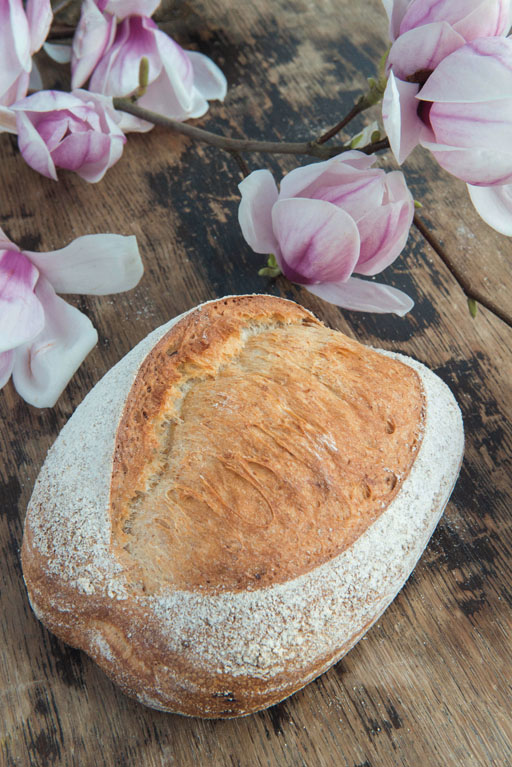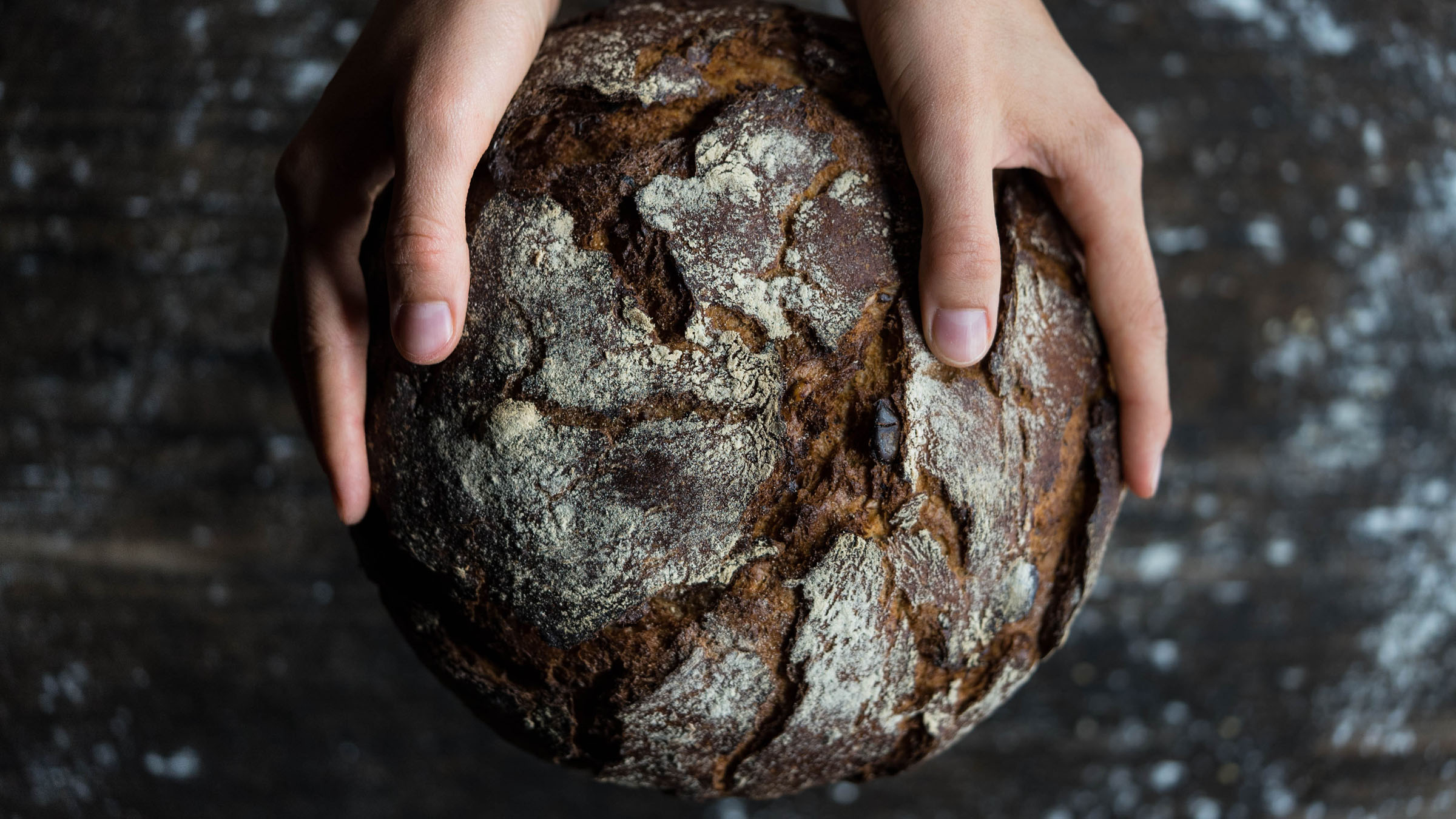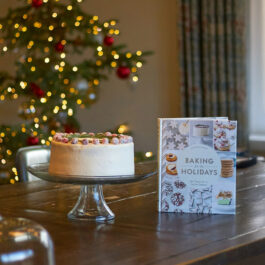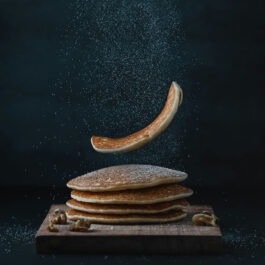It seems like the pandemic has the whole world in a baking frenzy. If you haven’t yet joined the club of avid home bakers worldwide, now’s the time to put your fears aside and set out to make your first loaf. The advice, words of encouragement and recipes of these expert bakers will send you on your way to baking delicious, festive breads for the holiday season and beyond.
Start With The Right Mindset
Maurizio Leo of The Perfect Loaf
“For me, the fundamental tool for a bread baker isn’t the oven, the bench knife or the thermometer; it’s going into each bake with the right mindset, having attentiveness, intention and flexibility.
“Years ago, when I first started baking sourdough bread, I realised just how important it is to step back and take a moment to assess how the bread dough is progressing: Is it on the cool side and needs more time to ferment? Does it feel slack and need another vigorous fold during bulk fermentation? Or is it moving quickly and needs to be divided early? When baking bread, there’s rarely any recipe that’s set in stone. Each day presents us with a new opportunity for earnest consideration, to work with purpose, and to learn the flexibility to adjust our baking process in the kitchen. Sourdough bread baking requires us to leverage our experience and use our senses to adjust to the conditions of the day, and this is precisely what makes it so enjoyable.”
Get started with Maurizio’s sourdough beginner’s guide.
Rediscover How Our Ancestors Made Bread
Hendrik Kleinwächter of The Bread Code
“With the current pandemic, sourdough has become a trend for many hobby chefs. Sourdough is the way our ancestors baked bread – rumour has it the Egyptians discovered the technique by accident: A woman left her dough next to the Nile river and returned a few days later to notice that it smelled funky. After baking, it became beautifully puffy and had a never-before-seen oven spring. It would be millennia before people finally understood that they had cultivated wild yeast and wild bacteria.
“Let’s reproduce that by creating our own sourdough starter at home. The starter will be mixed into all subsequent breads that you make:
1. Start by taking 50 grams of whole wheat flour and mixing it with 50 grams of room-temperature water. Cover the mixture to make sure it does not dry out (it should not, however, be airtight).
2. On day two, remove 10 grams of your mixture, place it in a new jar, and feed it again with 50 grams of water and flour.
3. Repeat this every day until you notice that your sourdough starter has doubled in size at room temperature within 5 hours. This typically takes 5-10 days.
4. Congratulations, you’ve made your own sourdough starter. This can be used as a yeast replacement for every recipe that you bake.
“Don’t throw away the starter you don’t need. Think of it as slow fermented wine. You can make an amazing German-style bread out of it, or delicious crackers.”
Don’t Give Up
Anita Šumer of the blog and book Sourdough Mania.
“When it comes to making sourdough bread, just start. Forget your fears. Sourdough isn’t rocket science. Don’t give up if you don’t succeed in the first run. Try it again and again until you make it. Sourdough baking is a process, and it teaches you patience and perseverance. The end result will be so worth it. Making sourdough bread is more than just merely mixing together flour, water and salt: it’s meditation and therapy at the same time, it’s connection to oneself and the earth. When you catch the sourdoughmania bug, it will transform you. Don’t say I didn’t warn you. It has changed me!”
Get Anita’s recipe for Sourdough Pumpkin Bread here.
[Photo: Primož Lavre]

Plan For Success
Melissa Weller, baker and author of A Good Bake
“I think this recipe for Parker House Rolls (link below) is the perfect beginning baker recipe for Thanksgiving. First read through the recipe before you begin. You will see that it calls for a little bit of sourdough starter. If you’re beginning to bake bread, you’ve likely tried starting a sourdough culture yourself. And if you haven’t, now is a perfect time to give it a try.
“One of the reasons this recipe is forgiving is that it doesn’t rely solely on the sourdough starter for leavening. Instant yeast also gives the dough its rise. If you need to get a sourdough starter going, I recommend ordering a dried culture on the internet and getting it started at home. I like to allow about a week of sourdough feedings before I use it in a bread recipe. This recipe does not require a lot of hands-on time, but it does require you to organise your time. Plan in advance, and you will be successful!”
Get Melissa’s Parker recipe for House Rolls here.
[Photo: Johnny Miller]
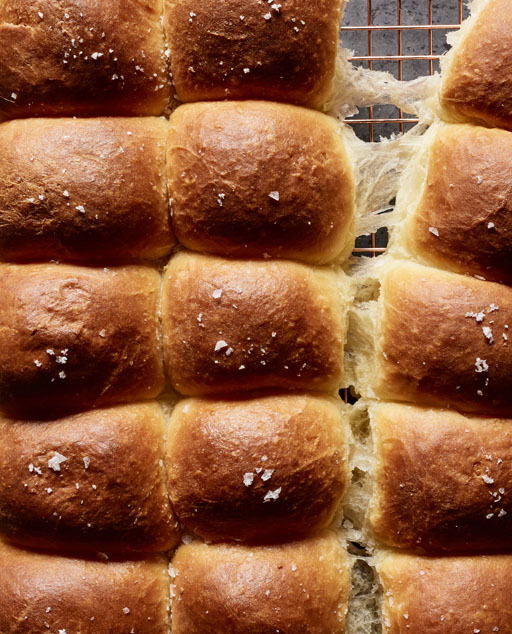
Embrace The Bread-Making Journey
Jenny Prior, blogger behind Living Bread Baker and author of Celebrate With Bread Baking
“If you are looking for a forgiving bread recipe to try, look no further than the beautiful babka. Your guests will be delighted – and suddenly hungry – when they see the twisted layers of bread filled with flavourful ingredients. In the words of Elaine from Seinfeld: ‘You can’t beat a babka.’
“This Cheese Herb Babka (link below) is so full of flavour and has an incredibly soft texture. It is a refreshing change to plain old dinner rolls for a family dinner or holiday meal. And between you and me, it only looks complicated! It is baked in a loaf pan, which gives you more room for error than free-form bread loaves. The twisted shape and cheese topping also will achieve a beautiful look that hides small flaws.
“Plan ahead and don’t rush the process. Patience is critical for allowing the flavourful preferment to become active and during the two rising stages: bulk ferment and proofing. Embrace the bread-making journey and celebrate each bake, even the less-than-perfect ones!”
Get Jenny’s recipe for Cheese-Herb Babka here.
[Photo: Laura Flippen]
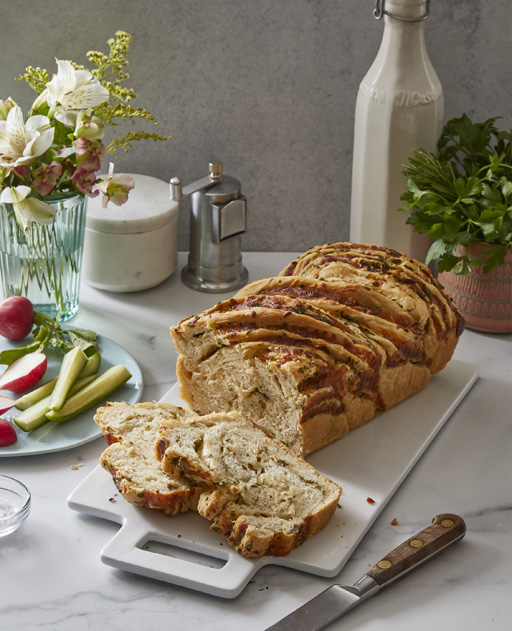
A Family Affair
Jane Mason of Virtuous Bread, Making Bread At Home
“My pita pocket recipe is simple, so it’s perfect for beginners. It’s super fun to make pita bread, and watching it puff up in the oven or the frying pan is exciting! Children love to make these, too (and to eat them). Furthermore, you can do so much with pita bread – use them for sandwiches or tear them up and eat them with dips.
“I founded Virtuous Bread to change the world through bread. By sharing recipes and skills, selling bread locally, teaching others to bake, and teaching people how to set up their own micro bakeries, we have touched the lives of thousands of people. During COVID, people have turned to wholesome, comforting foods like good bread. They have also had the time to learn new skills. Learning how to bake bread makes people more independent and confident. And sharing it makes them super popular!”
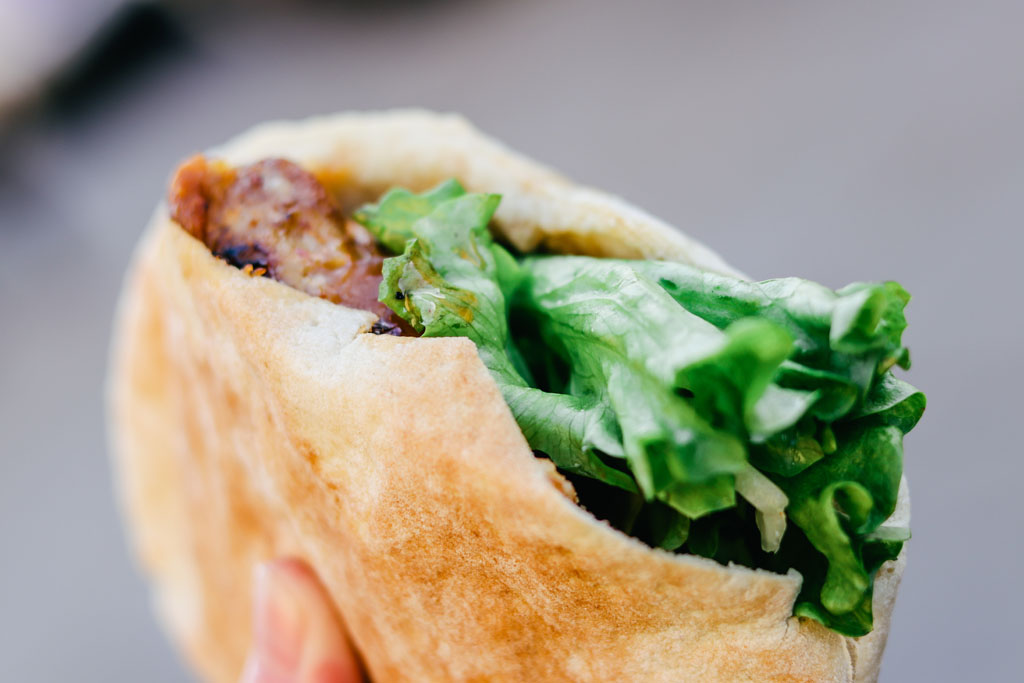
Prep Ahead
Cathy Warner of Bread Experience
“Celebrate the rich flavours of the holiday season with this citrusy bread roll wreath made of soft yeast rolls infused with fresh rosemary and orange zest. The wreath comes together very easily and makes a lovely centrepiece for your dinner table.
“The dough for these rolls can be made in the bread machine while you focus on other activities, then just shape the rolls, form the wreath, and bake it. If you don’t have a bread machine, the dough can easily be mixed by hand. Instructions for both are provided.
“To reduce prep time on bake day, zest the orange and chop the rosemary the day before, and place them in the refrigerator until ready to use. Optionally, make the dough balls and form the wreath the day before and place the shaped wreath in the refrigerator overnight. The next day, remove the wreath from the refrigerator and let the rolls warm up while the oven is preheating. Then bake as usual.”
Get Cathy’s recipe for Rosemary Orange Bread Roll Wreath here.
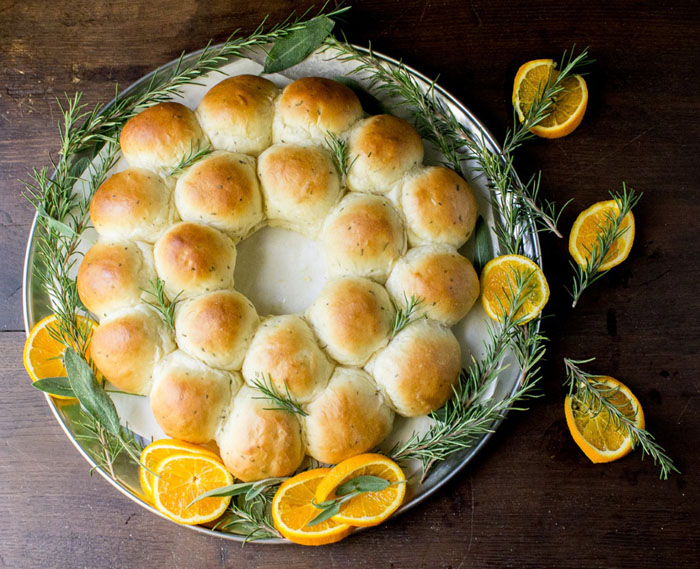
Try Naturally Fermented Breads
Paul Barker, founder of Cinnamon Square and author of Naturally Fermented Bread
“Whether you’re a novice or an experienced home baker, once you start baking bread the botanical way, you will be blown away by the sheer joy and sense of gratification this method brings you. With step-by-step guidance in my book, you will soon be making the most wholesome and nutritious breads from just flour, salt and fermented water from fruits, vegetables, plants or flowers. You can literally grow your own bread! I would like to share with you one of my personal favourite breads made from magnolia petals. As these petals are only available for a short period, you can substitute them with other edible flowers (please check that they are edible before using).”
Get Paul’s recipe for Magnolia Petal (Floral) Loaf here.
[Photo: Joanna Good]
